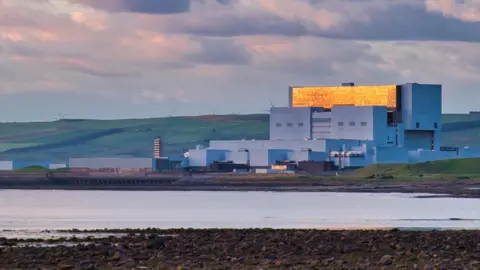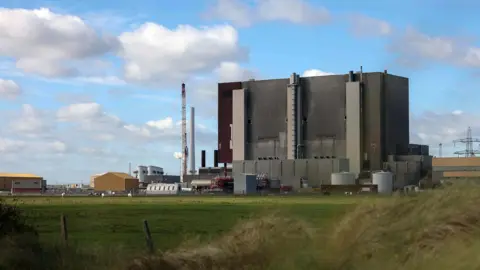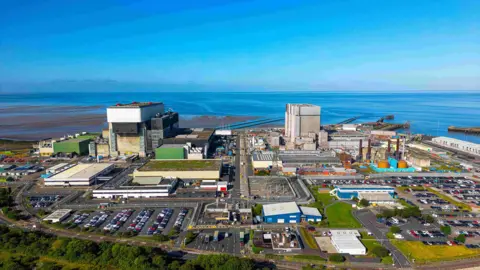 Getty Images
Getty ImagesThe lifespan of Scotland’s last remaining nuclear power station and three other plants in England are to be extended.
EDF Energy says Torness, in East Lothian, and its sister site Heysham 2, in Lancashire, will continue generating for an extra two years until 2030.
Two other sites – Hartlepool and Heysham 1 – will continue for an extra year until 2027.
The French state-owned company says it will now invest £1.3bn across its operational nuclear estate over the next three years.
 EDF
EDFTorness employs about 550 people with a further 180 contractors also working on site.
It began generating electricity in 1988 and was originally due to be decommissioned last year.
Construction work on Hartlepool power station started in 1968, taking 15 years to complete. Heysham 1 began generating in 1983 followed by Heysham 2 five years later.
In 2016, a decision was taken to extend Torness’ life until 2030 – but the discovery of cracks in the graphite bricks, which make up the reactor cores of some advanced gas-cooled power stations, led to a review.
As a result, it was announced in 2021 that the closure dates for Torness and Heysham 2 would be brought forward again by two years to 2028.
EDF says it has spent several years studying the progress of cracking and engineers feel they have a better understanding of the issues.
It says regular inspections will be carried out to ensure the sites can continue to operate safely.
 EDF
EDFThe four power stations support around 3,000 workers and can generate up to 4.6 gigawatts of electricity.
That’s enough to power about 4.5 million homes.
The decision to extend the lives of the power stations will help bridge the gap before EDF’S Hinkley Point C nuclear power station in Somerset begins generating around 2030.
The company made the decision following a year-long review into the four sites.
A separate review is looking at the possibility of extending its Sizewell B facility in Suffolk for a further 20 years.
Mark Hartley, managing director of EDF’s nuclear operations business, said the decision to continue operating the four sites was testament to the workers and the billions it has invested.
He added: “When EDF acquired these stations in 2009 they were all due to end generation by early 2023 which would have left the UK with just one generating nuclear power station at Sizewell B.
“Careful stewardship and around £8bn of investment has seen several life extensions for these stations and much higher output than was predicted.”
Homegrown energy
The decision has been welcomed by the National Energy Systems Operator, a new publicly-owned body tasked with connecting generation projects to the grid.
It says that nuclear will play an important role in the UK’s energy mix up to 2030 and then with new capacity out to 2050.
EDF says keeping the existing facilities operating will help preserve some of the skills needed for new nuclear.
The UK government says the decision is a “strong endorsement” of its clean power mission.
Energy Secretary Ed Miliband added: “These extensions are a major win for our energy independence.
“We can’t achieve clean power by 2030 without nuclear, which provides an all important steady supply of homegrown clean energy.”
